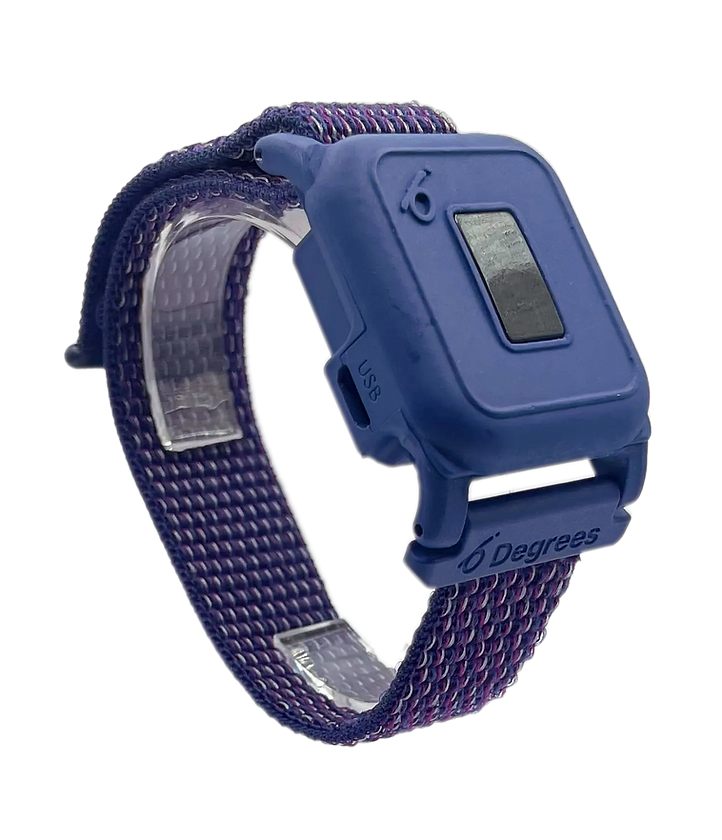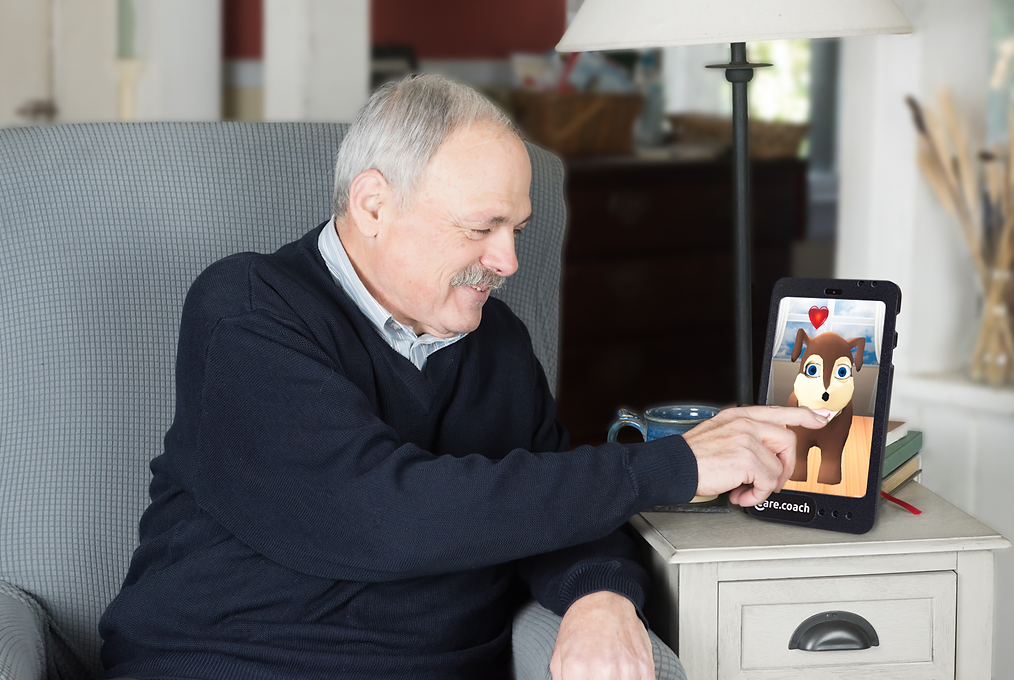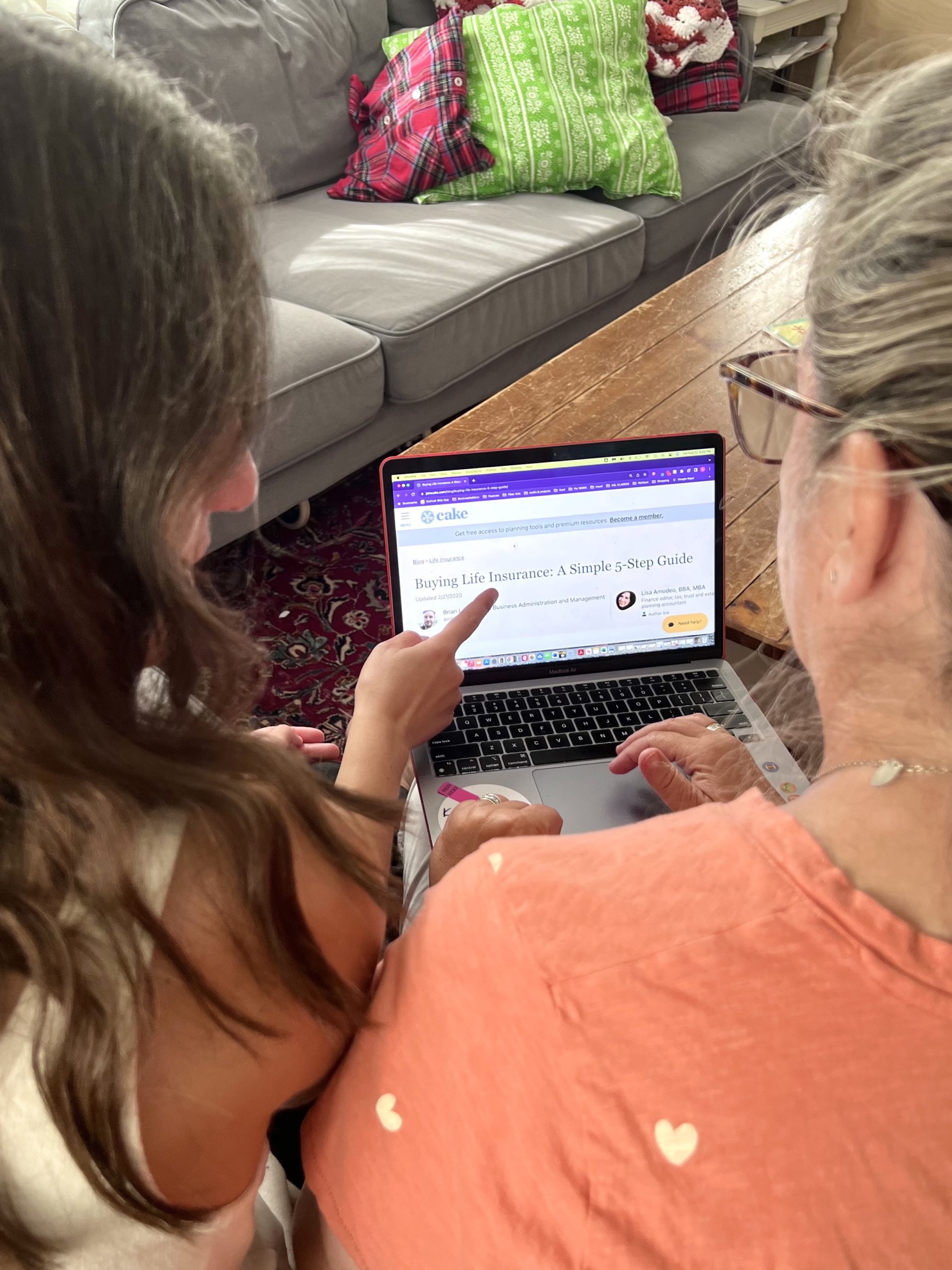How AI Is Being Optimized in AgeTech: An In-Depth Guide
By Mark Ogilbee
February 2024
Prior to the public release of ChatGPT (at the end of 2022) and similar generative AI tools, the popular understanding of AI and its promise — and potential dangers — was largely formed by Hollywood blockbusters and other pop-culture influences. This popular conception of computers run amok long outstripped the actual abilities of AI, which began in the 1950s, when researchers at universities and government agencies began work on algorithms to accomplish “fuzzy” tasks such as speech recognition. For decades, AI development continued apace quietly until advances in computing power and other breakthroughs brought the seemingly magical power of AI to everyone’s laptop.
And, just like that, we’re entering a new reality where AI is destined to be a part of our everyday lives.
But if most people have been surprised by the sudden appearance of ChatGPT and other AI tools, tech innovators — including many AgeTech Collaborative™ from AARP (ATC) startup participants — have been leveraging the power of AI behind the scenes to build their products and services for a long time. Currently, these startups include: Ashacare, Amicus Brain, AuraSense Tech, Care.coach, Cake, Concha Labs, MiiCare, Opsis, Reclaim Health, Rubitection , Tellus , Tuned, Thriving.ai, Together by Renee, Zemplee, 6 Degrees, and Intuition Robotics. In this article, we’ll look at a variety of ways 9 of these innovative startups and enterprises are leveraging AI, from alleviating social isolation to improving mobility to assisting elder care management and more.
Leveraging AI for Aging in Place
As more and more adults prefer to live out their golden years in their homes, there is an increasing demand for technology that supports aging in place. This ever-expanding category covers everything from wearable devices to smart home systems to medication management tools to telehealth and remote monitoring devices. Here we take a look at how two ATC startups are using AI to power devices that help older adults live more independently and safely, and help caregivers become more efficient.
Using AI to Empower Motion-Limited Individuals
6Degrees has developed an AI that focuses on and categorizes human motion, which allows people with disabilities or limited motion to interact with technology using the range of motion they do have. After a five-minute onboarding process, users can connect to smart devices via Bluetooth and use their existing range of motion to interact with devices such as phones and tablets.

The technology is being used to assist people with disabilities, improve communication and enable more independent living. Miri Berger, founder and CEO, explains: “If you have a tremor, we learn what that looks like and the device will turn it into a smooth result on the device. For example, you can connect to an Oculus virtual reality headset to play a game, and your limited motion will be turned into a full range of motion in the virtual world.”
AI is a critical component of this functionality. 6Degrees is building its own library of human motion and categorizing it, and personalizing it for every user.
“We collect thousands of data points and analyze those,” says Berger. “AI is an amazing tool to do that.” Down the road, AI will allow 6Degrees to anticipate a user’s motion. For example, by learning the particularities of an individual’s movement when they draw a circle, the AI can learn to anticipate the user’s intentions and can complete the circle faster and faster.
This translates into allowing people with motion-related disabilities to get back to work more quickly, for example, and give them a higher quality of life.
“AI is an amazing opportunity to fit technology to the person, to fit the way people move individually — rather than users needing to adjust to the technology,” says Berger.
AI-Driven Radar Technology Redefining Health Monitoring
Tellus is another ATC startup using AI to drive innovation. Tellus has developed a hardware and software solution that uses radar as a sensor to generate point cloud data in real time for analyzing health information. The technology can provide actionable data without the need for wearables or cameras, which is more convenient and helps ensure user privacy.

“There’s a lot of AI that goes into our product,” says Tania Coke, co-founder of Tellus. “Imagine data points being generated multiple times per second and translating those points into real health information, such as whether somebody is sleeping versus in their bed but awake, or how many hours they’re spending in their room — which is indicative of loneliness and social isolation.”
Tellus has leveraged recent advances in radar and 3D sensing technology to collect fine-grained information and turning that into health data. “We’re using AI to turn the radar data into information and making sure that it’s actionable,” says Coke. “We’ve developed a large language model AI called Pomfrey, which will be immensely helpful: Caregivers can see information — such as too many wake-ups in the middle of the night — and use Pomfrey to dig into the data to see if it needs further attention.”
Because Tellus uses AI to analyze data in real time, they can focus on surfacing only the most important information. Coke explains: “For aging in place, we want to focus on the big changes in behavior. If someone sleeps for eight hours and that’s typical, the caregiver doesn’t need to know that. But if there’s a change in that behavior, that could be significant.”
This eases the burden on caregivers and allows Tellus to deliver a highly personalized healthcare experience based on the behaviors of each individual user. “Pomfrey allows a level of interaction with the data that wouldn’t be possible otherwise,” says Coke.
AI for Care Management of Loved Ones
Additionally, AI offers tremendous possibility when it comes to care management of older adults. Whether it’s improving communication, measuring vitals, or aiding in cumbersome administrative healthcare tasks, AI can aid in overcoming many common roadblocks people encounter as they age. Let’s take a look at two ATC startups that are using generative AI to simplify the lives of caregivers and the loved ones they care for.
Empathetic AI in Neurodegenerative Care Management
Amicus Brain is a digital health platform that leverages the power of AI to reimagine care management for people living with neurodegenerative disorders, such as Alzheimer’s disease and other dementia. Its app features a personalized advisor named Keiko that caregivers can talk to using natural language, and Keiko replies with personalized, curated information that’s relevant and actionable.
Amicus Brain’s founder and CEO, Dr. Chitra Dorai, has a PhD in computer science, so using AI to power Keiko was a natural fit. Crucially, Dorai wanted to make sure caregivers could interact with Keiko using everyday, conversational language. “I wanted to build something that provided the same level of comfort and trust as interacting with a human advisor,” says Dorai.
AI makes this possible by getting to the heart of every query, no matter how the caregiver might phrase the issue. “Someone could say, ‘Mom is being unusually combative today,’ or ‘Mom is verbally abusing me,’ and the AI understands that aggression — which is a behavioral symptom of dementia — is the heart of the matter,” says Dorai.
Understanding the fundamental issue at the center of a query allows Keiko to provide more helpful responses and suggestions, tailored to each situation. Dorai explains how the conversational AI makes this possible: “People try to reductively say that it’s a chatbot, but it’s far beyond a chatbot. Underneath these large-scale language models is the science of understanding the structure of natural language. The same transformer model at the foundation of ChatGPT is what drives the natural language understanding in Amicus Brain.” This, in turn, helps Dorai turn her vision for a simple-to-use app into a reality.
Simplifying Healthcare Tasks with AI Assistance
Together by Renee is a digital platform that helps aging Americans complete everyday healthcare tasks from taking medications to scheduling doctor appointments — all by consolidating everything in a single app. Renee even helps clients save on their prescription medications and delivers them right to their door.
Nick Desai, Together by Renee’s CEO, says AI is a game-changer: “With traditional optical character recognition technology, if you scanned the label of a pill bottle, letters might get cut off and information missed because the bottle is a cylindrical object,” Desai says.
“But if you fed the same image into generative AI, the AI will recognize things and fill in the gaps, the same way a human would. That potential applied to healthcare is transformative in an incredibly powerful way.”
Case in point: Together by Renee recently released an app called Together that uses AI to vastly simplify many healthcare-related tasks. “Together is a health assistant that uses AI to do things for you,” says Desai. “You take pictures of your pill bottles, and from there we know when your refills are due, so we send you a refill reminder five days before you run out of pills. Then the AI actually calls the pharmacy to order your refill for you. And if your bottle says zero refills, we let you know 15 days beforehand that you need to call your doctor to ask for a refill. You can take pictures of your insurance cards and appointment cards, and Together uses AI to process and consolidate all that information automatically.”
Together also uses a novel AI approach to measuring key vitals, such as blood pressure, using just a selfie: Any user can point their phone’s camera at their face, and in just 45 seconds they will get measurements for blood pressure, heart rate, blood oxygen and more. Desai says this unifies the app. “Imagine the typical person with high blood pressure,” says Desai. “Together reminds them to take their blood pressure medications, orders their refills and helps them measure their blood pressure — and Together tracks all that in one place to close the loop with their doctor.” This kind of closed-loop, whole-person care is proven to improve health outcomes and lower costs.
Just as importantly, the AI behind Together positions all the information inside the bigger picture. “That’s the beauty of AI,” says Desai. “This data all has to be put in context — not just what’s going on with the patient, but also for caregivers who are dealing with the health issues of loved ones.”
Tackling Social Isolation in Aging Adults with AI Solutions
Older adults face an increased risk for social isolation and loneliness, which can have serious physical and mental health implications. AI’s adaptability offers communication capability that can not only improve social connection, but also aid in building empathy and trust in care. Here are two ATC startups, who are incorporating and continually training AI models in their solutions to help alleviate the problem of social isolation among older adults.
Building Empathy Using AI in Care Communication
Care.coach is aiming to solve the caregiver crisis and improve health outcomes through a unique combination of AI and human intelligence, all packaged in an easy-to-use, at-home device. “We’ve created an avatar on our device; it looks like a little dog or cat,” says founder and CEO Victor Wang. “It’s a relational agent that combines the empathy and intelligence of our human team working around the world 24/7, with software intelligence and AI-driven automation.”

AI has been instrumental in helping care.coach develop its offerings.
“We use AI to create an empathy and conversational intelligence that wouldn’t have been possible a few years ago,” says Wang.
Training the AI is a critical part of the process. Care.coach starts with open-source foundational models, then, says Wang, “we use our own training platform to elevate the ability of the foundational model to be more empathetic and conversational, as opposed to just spouting out a bunch of information. And we make sure that it’s safe and effective in a healthcare context, which is unique to what care.coach does.”
Care.coach doesn’t stop there, however. They can perform additional rounds of AI training called reinforcement learning with human feedback, empowered by their staff who operate the avatars. For example, if a customer expresses concern about losing their Medicare coverage, the AI will generate a response, and the human behind the avatar can rate the response in terms of its effectiveness. “That’s our reinforcement learning with a human feedback loop,” says Wang. “We’re constantly improving our model to do its job better and better.”
AI-Infused Holistic Health and Social Care
Thriving.ai is a digital application that helps to integrate health and social care, bringing together people, data and the business of healthcare to deliver a holistic experience for older adults and their “circle of care” caregivers. “We bring the health components and the social components together,” says founder Shain Khoja, “because 80% of our health is a result of social determinants of health.”
For example, a user’s interaction with the app tells Thriving.ai how active they are on a particular day compared to their daily pattern. If activity is lower, that could be an indicator that they’re feeling sad. “In turn, not being active can reinforce that sad mood,” says Khoja. “It’s very multidimensional.” Currently, if the app detects that a user is sad, data analytics can generate certain responses or suggest certain content.

But Thriving.ai is beginning to use AI to deepen the app’s functionality and the user experience. Khoja explains: “The natural language processing that we’re working on will actually say, ‘I’m sorry to hear you’re sad. Since you love cats, here’s a selection of lovely pictures of cats. And may I reach out to a circle of care member to get in touch?’ It then gives the user the dignity of responding to that. In turn, this enables the AI to continue to learn. If you feel better, the AI has now learned something that triggers your mood to improve; it will continue to learn those things and become more equipped to respond to the needs of users.”
Personalizing the Customer Journey with AI
As we age, our needs become increasingly complex. Let’s examine how two AgeTech Collaborative™ startup participants are using AI to personalize the customer experience by providing their users with information and resources tailored to each person’s specific needs.
AI Applications Transforming End-of-Life Planning
Cake is the world’s largest digital platform for funeral and end-of-life planning and post-loss support. Aiming to help people make informed decisions during an emotional phase of life, Cake connects families with novel solutions and helps them navigate the complexities of death and grieving.

According to CEO Suelin Chen, Cake uses AI to power their recommendation algorithms, which personalize suggested goods and services for the millions of people who visit the company’s website every year. “We have different data points about visitors to our site,” says Chen. “Starting with those, we can start to learn what kinds of information each visitor will find helpful. These algorithms get smarter every day, and we can optimize and personalize users’ journeys on the site to be sure they’re being matched with the right tools, vendors and resources.”
This kind of personalization is particularly important to Cake. “This is a very emotional topic for a lot of people,” Chen says. “We’re very sensitive that the people we serve are in a vulnerable place, so we want to get it right.” AI is proving to be an effective tool that helps Cake understand how the company can best serve its users. “People come with their whole history of how they’ve interacted with mortality — their cultural and religious traditions and their personal experiences color how they relate to it. Being able to discern those things through data, we can tailor a better experience.”
AI-Powered Health Optimization for Personalized Wellness
InsideTracker provides a personal health analysis and data-driven wellness guide designed to help people optimize their health. By integrating personal health information with scientifically validated research, InsideTracker makes personalized lifestyle-based recommendations to help users improve their biological profiles and live healthier, longer.

AI has been foundational to InsideTracker from the company’s founding, according to Renee Deehan, vice president of science and artificial intelligence. It uses more traditional machine learning to develop various product features, and more recently it started using a large language model to develop a chatbot feature.
But the company leverages a different kind of AI to power its core functionality.
“The particular type of AI we use is called knowledge representation and reasoning,” says Deehan. “The ‘knowledge representation’ part means that we can take thousands or even tens of thousands of scientific papers, extract the important bits of information, and put them into a machine-readable format. The ‘reasoning’ part means that we teach the computer how to interpret the information like an expert would. Basically, we’re teaching the computer to think like a subject matter expert.”
While the gold standard for gathering information is still having a scientist review papers individually, using AI and natural language processing algorithms allows InsideTracker to scale the process. “Now we can do way more than a human ever could,” says Deehan.
Microsoft Enables Companies to Drive Efficiency and Inclusivity with AI
Of course, startups aren’t the only businesses leveraging AI in the AgeTech space. Enterprises are playing a major role as well. We spoke with Patty Obermaier, emerging growth officer for global health and life sciences portfolio at Microsoft, which has a mission to empower every person and organization on the planet to achieve more. Microsoft for Startups is part of the AgeTech Collaborative.
Obermaier’s role involves identifying emerging needs of Microsoft’s global health and life sciences customers, from digital native companies that are building products in the cloud using the latest technology, to massive enterprise organizations such as healthcare payers and providers — then helping them use the newest developments in AI to meet those needs.
“We’re living in a world of massive change. AI has been around for years, but now we’re at an inflection point. AI breakthroughs are going to change and augment the way we work and live,” says Obermaier.
“Regardless of industry or size of the business, everyone is trying to figure out how generative AI will enable them to do more.”
These more recent developments are fundamentally changing both the ways users interact with technology and what they can do with it. “There are two dimensions of this new AI,” says Obermaier. “If you think about computing, the last 70-plus years have been a pursuit to create human-computer interfaces that are more intuitive, such as the keyboard and mouse. Now, we’re at the next point, which is natural language as a human-computer interface. You can use natural language to interface with AI systems to produce code if you’re developing an application, music if you’re a composer, or poetry if you’re a poet.”
Information management is undergoing a similar revolution, as processes and content become increasingly digitized. “We have been digitizing the world — people, places and things. With the new generation of AI, we now have a reasoning engine that allows us to start with a draft of a task we want to complete,” says Obermaier.
Microsoft aims to provide its enterprise customers with the platform for using AI in transformative — and responsible — ways. “Azure AI has foundational models that we have created, which our customers can apply their data to and gain deeper insights,” Obermaier says.
For example, a hospital can run Microsoft’s Azure AI foundational models on their electronic medical records within their IT environment in order to identify patients with certain characteristics, then design preventive treatment plans for them. This ensures a higher level of accuracy than relying on publicly available information. “Some AI models run on data from the internet only, which in many cases hasn’t been validated or may be outdated. That can be problematic,” says Obermaier. “By running foundational models from Microsoft or ones that an organization has developed themselves on top of their data, they can have greater confidence that the information has been verified, is trusted and is coming from the right resources.”
It’s not just enterprises and large organizations that can benefit from these developments in AI, however; AI can impact small companies in particularly helpful ways. “We’re seeing an explosion of startups that are using AI foundational models and creating their own IP on top of those,” says Obermaier. “As a platform company, that excites us at Microsoft because Azure AI is one of the most complete AI platforms that companies can leverage to bring their creativity and products to life.”
On a personal level, Obermaier herself sees the power of AI as an important step toward a greater good. “I’m driven by three simple numbers: eight, four and one,” she says. “There are 8 billion people on the planet, but 4 billion don’t have access to adequate healthcare — that’s half of our population — and 1 billion people have disabilities. So every day, I’m asking, ‘Are we being inclusive? How can we create something for everyone? Are we enabling better access to better care?’”
Obermaier is excited about working with companies that share her vision, such as AgeTech Collaborative™ startup participant Voiceitt, which enables people with nonstandard speech patterns to live more connected and independent lives by, among other things, using cloud-based voice assistants. Voiceitt also features an integration with Microsoft Teams that transcribes the speaker’s speech in real time during virtual meetings. This highlights the broad applicability of Microsoft’s approach. “Our goal is to democratize breakthroughs in AI through our products to help people and organizations be more productive and solve the most pressing problems of our time,” says Obermaier. “We are committed to making the promise of AI real and doing it responsibly.”
Future of AI in AgeTech
By 2050, the 65+ population in the US will double, creating a need for technology solutions to support aging Americans like never before. As we look to the future, we’re excited about the possibility AI provides for AgeTech solutions we may not have even dreamed of.
“It’s clear to me the one obvious path to relieving overworked caregivers and stretched families is with the deployment of sophisticated tools and assistants powered by AI and generative AI,” said Rick Robinson, GM of the AgeTech Collaborative. “We have many companies in our portfolio attacking different aspects of the problem and are seeking more entrepreneurs to help in the effort with new and creative approaches.”
Gain access to more 50+ research, analysis, trends, and connect to key players in this rapidly growing market. Join our one-of-a-kind ecosystem of the best minds in AgeTech.



